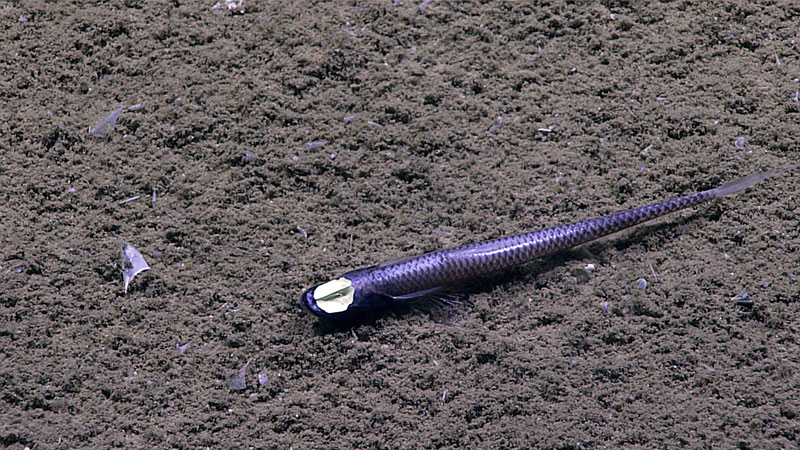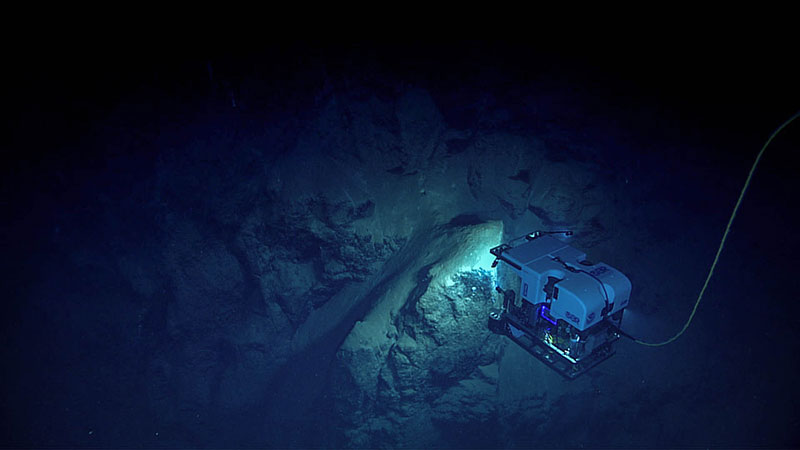Dive 09 surveyed the biology and geology of an unexplored area in the northern end of the West Florida Escarpment, approximately 60 kilometers (37.25 miles) east of the area explored during Dive 08. At 2,258 meters (7,408 feet) deep, the topography was steep and heavily sedimented. A few shrimp were observed close to the landing spot. As remotely operated vehicle Deep Discoverer (D2) moved upslope, scarps resulting from soft sediment slope failure were observed, indicating seafloor instability. Two pieces of man-made debris (mylar balloon, metal can) were observed, as were limited excavation burrows. Later in the dive, outcropping rocks, free of sediment cover, were observed with attached corals and sponges. For the remainder of the dive, the seafloor was characterized by alternating carbonate rock outcrops and very steep sediment covered patches. Exposed carbonate rocks almost uniformly exhibited a black coating that was likely ferromanganese oxide. Recently disturbed sediments, indicated by their lighter color, often ran downslope in long streaks further suggesting the instability of the slope.
The most commonly observed animals were glass sponges (various species of Hexactinellida), and bamboo corals (Keratoisis sp.). Other species observed included other bamboo corals (Acanella sp., Isidella sp., and Eknomisis sp.), chrysogorgid corals (Iridogorgia magnispiralis, Iridogorgia splendens, and Metallogorgia melanotrichos) primnoid corals (Narella sp., Candidella umbratica, and unbranched Candidella sp.), plexaurid corals (Paramuricea biscaya), mushroom corals (Anthomastus sp.), corallids (Corallium niobe), bubblegum corals (Sibogagorgia cauliflora), stoloniferan corals (Clavularia rudis), sea stars (Circeaster sp., Pythonaster sp.), shrimp (Mysidae, Cerataspis sp., Nematocarcinus ensifer), squat lobsters (Munidopsis sp.), holothurians, carnivorous sponges (Chondrocladia sp.), and a winged octopus (Cirroteuthidae). Fish observed during the dive included cusk-eels (Acanthonus armatus, Diplacanthopoma sp.), cutthroat eels (Ilyophys brunneus), and a rattail (Coryphanenoides rudis). A tripod fish (Ipnops murrayi) was also observed and, after positioning D2, all lights were turned off to determine if the tripod fish exhibited bioluminescence in its eyespots, as has been hypothesized by several investigators; no bioluminescence was observed. Only a single black coral colony (Stichopathes sp.), was documented during the dive, even though this area was predicted to have very high habitat suitability in models.

